Related Research Articles
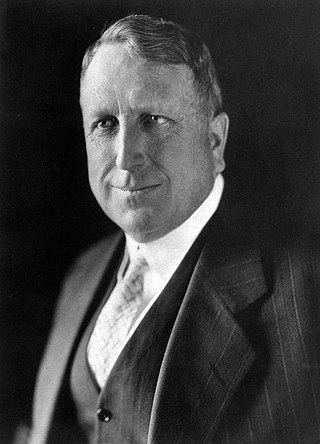
William Randolph Hearst Sr. was an American newspaper publisher and politician who developed the nation's largest newspaper chain and media company, Hearst Communications. His flamboyant methods of yellow journalism influenced the nation's popular media by emphasizing sensationalism and human-interest stories. Hearst entered the publishing business in 1887 with Mitchell Trubitt after being given control of The San Francisco Examiner by his wealthy father, Senator George Hearst.
In journalism, yellow journalism and the yellow press are American newspapers that use eye-catching headlines and sensationalized exaggerations for increased sales. The English term is chiefly used in the US. In the United Kingdom, a similar term is tabloid journalism. Other languages, e.g. Russian, sometimes have terms derived from the American term. Yellow journalism emerged in the intense battle for readers by two newspapers in New York City in 1890s. It was not common in other cities.

Walter Winchell was a syndicated American newspaper gossip columnist and radio news commentator. Originally a vaudeville performer, Winchell began his newspaper career as a Broadway reporter, critic and columnist for New York tabloids. He rose to national celebrity in the 1930s with Hearst newspaper chain syndication and a popular radio program. He was known for an innovative style of gossipy staccato news briefs, jokes, and Jazz Age slang. Biographer Neal Gabler claimed that his popularity and influence "turned journalism into a form of entertainment".

The Hartford Courant is the largest daily newspaper in the U.S. state of Connecticut, and is advertised as the oldest continuously published newspaper in the United States. A morning newspaper serving most of the state north of New Haven and east of Waterbury, its headquarters on Broad Street in Hartford, Connecticut was a short walk from the state capitol. It reports regional news with a chain of bureaus in smaller cities and a series of local editions. It also operates CTNow, a free local weekly newspaper and website.
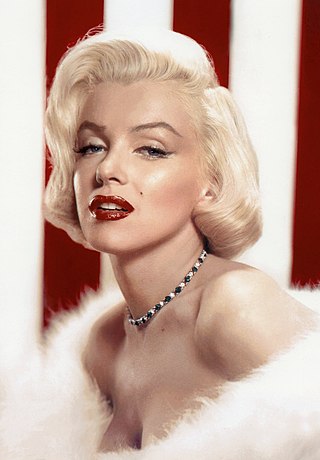
Photoplay was one of the first American film fan magazines, its title another word for screenplay. It was founded in Chicago in 1911. Under early editors, Julian Johnson and James R. Quirk, in style and reach it became a pacesetter for fan magazines. In 1921, Photoplay established what is considered the first significant annual movie award. For most of its run, it was published by Macfadden Publications. The magazine ceased publication in 1980.
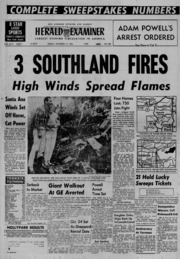
The Los Angeles Herald Examiner was a major Los Angeles daily newspaper, published in the afternoon from Monday to Friday and in the morning on Saturdays and Sundays. It was part of the Hearst syndicate. It was formed when the afternoon Herald-Express and the morning Los Angeles Examiner, both of which were published there since the turn of the 20th century, merged in 1962.

Frederick Orlin Tremaine was an American science fiction magazine editor, most notably of the influential Astounding Stories. He edited a number of other magazines, headed several publishing companies, and sporadically wrote fiction.

Confidential was an American magazine considered a pioneer in scandal, gossip and exposé journalism. Founded by Robert Harrison, it was published quarterly from December 1952 to August 1953 and then bi-monthly until it ceased publication in 1978.

Composograph refers to a forerunner method of photo manipulation and is a retouched photographic collage popularized by publisher and physical culture advocate Bernarr Macfadden in his New York Evening Graphic in 1924.

The New York Daily Mirror was an American morning tabloid newspaper first published on June 24, 1924, in New York City by the William Randolph Hearst organization as a contrast to their mainstream broadsheets, the Evening Journal and New York American, later consolidated into the New York Journal American. It was created to compete with the New York Daily News which was then a sensationalist tabloid and the most widely circulated newspaper in the United States. Hearst preferred the broadsheet format and sold the Mirror to an associate in 1928, only to buy it back in 1932.

Bernarr Macfadden was an American proponent of physical culture, a combination of bodybuilding with nutritional and health theories. He founded the long-running magazine publishing company Macfadden Publications.
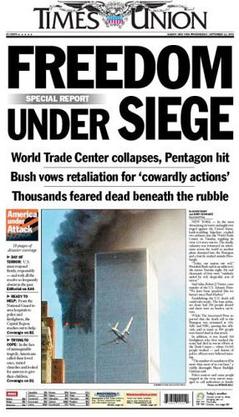
The Times Union, or Times-Union, is an American daily newspaper, serving the Capital Region of New York. Although the newspaper focuses on Albany and its suburbs, it covers all parts of the four-county area, including the cities of Troy, Schenectady and Saratoga Springs. In 2021, the paper also expanded to covering the Hudson Valley. It is owned by Hearst Communications. The paper was founded in 1856 as the Morning Times, becoming Times-Union by 1891, and was purchased by William Randolph Hearst in 1924. The sister paper Knickerbocker News merged with the Times Union in 1988. The newspaper has been online since 1996.

Arthur Brisbane was one of the best known American newspaper editors of the 20th century as well as a real estate investor.

Tabloid journalism is a popular style of largely sensationalist journalism which takes its name from the tabloid newspaper format: a small-sized newspaper also known as half broadsheet. The size became associated with sensationalism, and tabloid journalism replaced the earlier label of yellow journalism and scandal sheets. Not all newspapers associated with tabloid journalism are tabloid size, and not all tabloid-size newspapers engage in tabloid journalism; in particular, since around the year 2000 many broadsheet newspapers converted to the more compact tabloid format.
Jazz journalism was a term applied to American sensational newspapers in the 1920s. Focused on entertainment, celebrities, sports, scandal and crime, the style was a New York phenomenon, practiced primarily by three new tabloid-size daily newspapers in a fight for circulation. Convenient for readers on subways, the small-format papers were designed to display large page one photographs and headlines for newsstand sales. The tabloids' popularity was controversial, but also influenced the city's and nation's more traditional media, especially when columnist Walter Winchell became popular both in print and on the air.
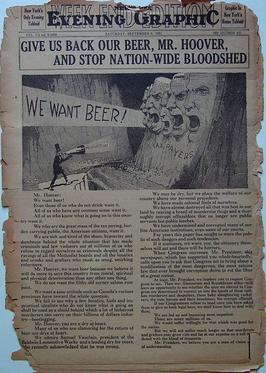
The New York Evening Graphic was a tabloid newspaper published from 1924 to 1932 by Macfadden Publications. Exploitative and mendacious in its short life, the Graphic exemplified tabloid journalism and launched the careers of Walter Winchell, Louis Sobol, and sportswriter-turned-columnist and television host Ed Sullivan.
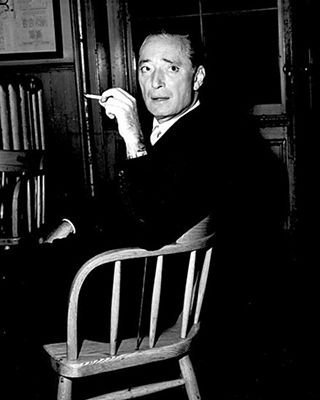
Robert Harrison was an American journalist and publisher, known internationally for sensational news stories. He worked for the New York Evening Graphic, the Motion Picture Herald and was publisher of Confidential magazine.
Macfadden Communications Group is a publisher of business magazines. It has a historical link with a company started in 1898 by Bernarr Macfadden that was one of the largest magazine publishers of the twentieth century.

The Daily News was a newspaper published in Los Angeles from 1923 to 1954. It was founded in 1923 by Cornelius Vanderbilt IV and bought by Manchester Boddy who operated it through most of its existence.
Lester Cohen was an American novelist, screenwriter and author of non-fiction. He is best known as the author of the novels Sweepings and Coming Home, and the screen play for Of Human Bondage.
References
- ↑ Emile Gauvreau, My Last Million Readers, Dutton 1941
- ↑ John Bard McNulty, Older than the nation, The Life and Times of the Hartford Courant... Oldest newspaper of continuous publication in America. 1964 Pequot Press
- ↑ Emile Gauvreau, My Last Million Readers, Dutton 1941
- ↑ Emile Gauvreau, My Last Million Readers, Dutton 1941
- ↑ Lester Cohen, The New York Graphic, the World's Zaniest Newspaper, Chilton 1964
- ↑ Michael M. Greenburg: Peaches and Daddy, a Story of the Roaring '20s, the Birth of Tabloid Media, and the Courtship that Captured the Hearts and Imaginations of the American Public; Overlook Press; Oct 2, 2008.
- ↑ Lester Cohen, The New York Graphic, the World's Zaniest Newspaper, Chilton 1964
- ↑ Emile Gauvreau, My Last Million Readers, Dutton 1941
- ↑ "The Paper Chase". Columbia Journalism Review. Retrieved 2019-03-28.